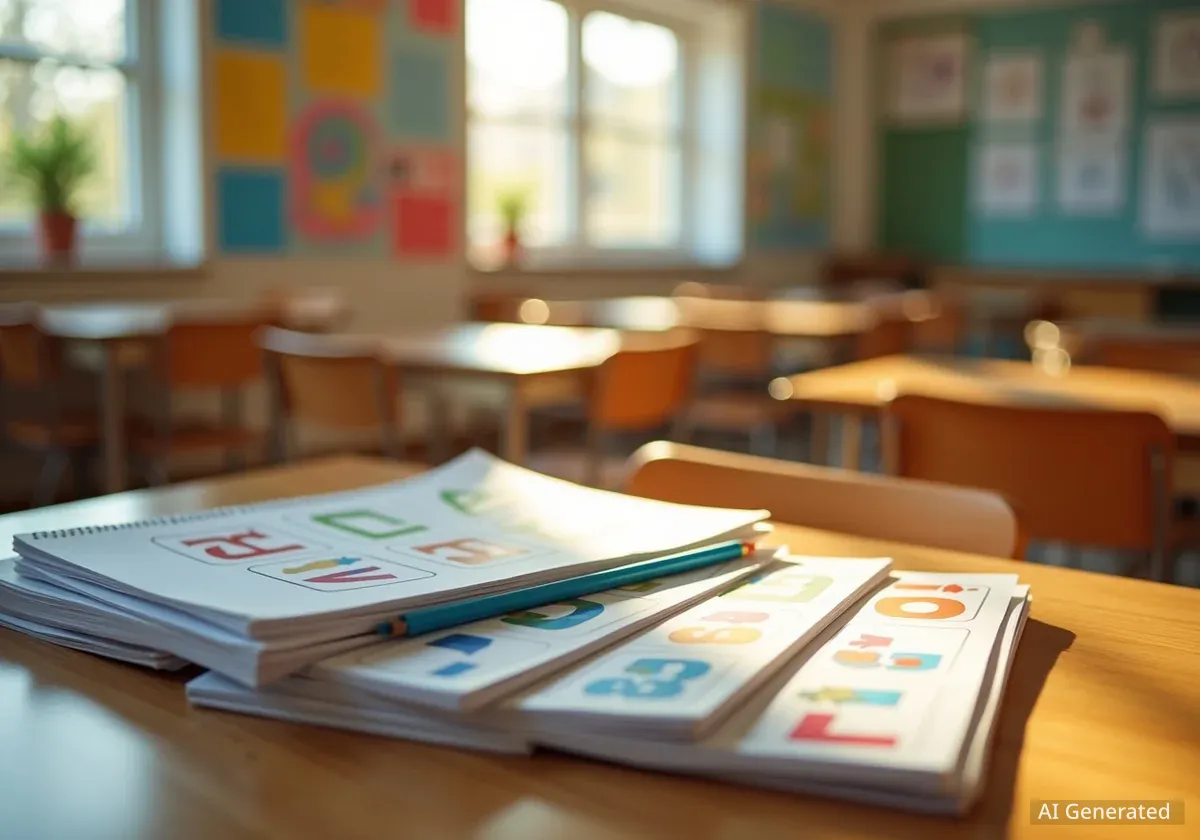California has officially changed its approach to early literacy education, with Governor Gavin Newsom signing a new law that mandates phonics-based instruction in public schools. This legislative reform marks a significant shift away from other teaching methods and aligns the state with a growing national movement focused on the science of reading.
The new law aims to address persistent challenges in student literacy by requiring schools to use evidence-based techniques, specifically those centered on teaching children the relationship between letters and sounds. The move comes after decades of debate among educators and policymakers about the most effective way to teach children how to read.
Key Takeaways
- California Governor Gavin Newsom has signed a law requiring schools to use phonics-based reading instruction.
- The reform moves away from previously used methods like "balanced literacy" that have faced criticism for being less effective.
- This decision aligns California with a national trend toward adopting teaching methods supported by the "science of reading."
- The legislation was passed despite some opposition from teacher unions, who raised concerns about implementation and curriculum control.
Details of California's New Reading Law
The recently signed legislation represents a major overhaul of early literacy instruction for millions of students in California. The law mandates that school districts adopt reading curricula that are grounded in foundational skills, with a strong emphasis on phonics.
Phonics is a method of teaching reading that focuses on correlating sounds with letters or groups of letters. Students learn to decode words by breaking them down into individual sounds, a process that research has shown is crucial for developing strong reading abilities. This contrasts with other methods that may encourage students to guess words based on pictures or context clues.
The reform requires schools to abandon instructional materials that are not aligned with this evidence-based approach. It also allocates resources for teacher training to ensure educators are equipped to implement the new phonics-centric curriculum effectively across the state's elementary schools.
The 'Reading Wars' Context
For decades, American education has been the stage for a debate known as the "reading wars." This conflict has primarily pitted two philosophies against each other:
- Phonics: A systematic approach where students are explicitly taught to connect sounds to letters to decode words.
- Whole Language/Balanced Literacy: An approach that emphasizes learning to read through exposure to literature and using context clues, with less direct instruction on letter-sound relationships.
A growing body of cognitive science research, often referred to as the "science of reading," has provided substantial evidence that explicit phonics instruction is the most reliable method for teaching the vast majority of children to read proficiently.
A Shift Toward the Science of Reading
California's policy change is not happening in isolation. It is part of a nationwide trend where states are re-evaluating their literacy programs in favor of what is commonly called the "science of reading." This term refers to a large body of research from fields like cognitive psychology and neuroscience that explains how the human brain learns to read.
This research indicates that reading is not a natural process like speaking; the brain must be explicitly taught how to connect written symbols (letters) to spoken sounds. Methods that bypass this fundamental decoding skill have been linked to lower literacy rates.
National Literacy Statistics
According to the National Assessment of Educational Progress (NAEP), often called "The Nation's Report Card," a significant portion of American students struggle with reading. Data from recent assessments shows that approximately 37% of fourth-grade students perform below the NAEP Basic level in reading, indicating they do not have even partial mastery of the grade-level skills.
States like Mississippi and Colorado, which adopted science of reading principles years ago, have seen notable improvements in their students' reading scores. These successes have provided a model for other states, including California, that are seeking to improve literacy outcomes.
Implementation and Teacher Union Response
The transition to a statewide phonics-based curriculum is a significant undertaking that will require substantial changes in classrooms. The new law includes provisions for professional development to retrain teachers who may have been educated in different methodologies.
However, the reform did not pass without debate. Some of California's teacher unions expressed resistance during the legislative process. Their concerns were not necessarily about phonics itself but often centered on issues of local control, the cost of new materials, and the need for adequate teacher training and support.
"While we support evidence-based instruction, mandates must be accompanied by the necessary resources and professional development to ensure a successful transition for both educators and students," noted a statement from a state education group during the debate.
Proponents of the law argue that standardizing the approach to reading instruction is essential for ensuring equity. They maintain that a consistent, science-backed curriculum will help close achievement gaps and provide all students, regardless of their background or school district, with the foundational skills needed for academic success.
What This Means for Students and Parents
For parents of young children in California, this change will likely become apparent in the coming school years. They can expect to see a greater focus on several key areas in their children's early education:
- Phonemic Awareness: Activities that help children hear and manipulate the individual sounds in spoken words.
- Systematic Phonics: Direct instruction on the relationship between letters and sounds.
- Decoding Practice: Students will spend more time sounding out words in texts.
- Focus on Fluency: As decoding becomes automatic, the focus will shift to reading smoothly and with expression.
The ultimate goal of this statewide reform is to build a stronger foundation for literacy, which is critical for all future learning. By ensuring every child learns the fundamental mechanics of reading, California aims to improve long-term educational outcomes and better prepare its students for the future.





